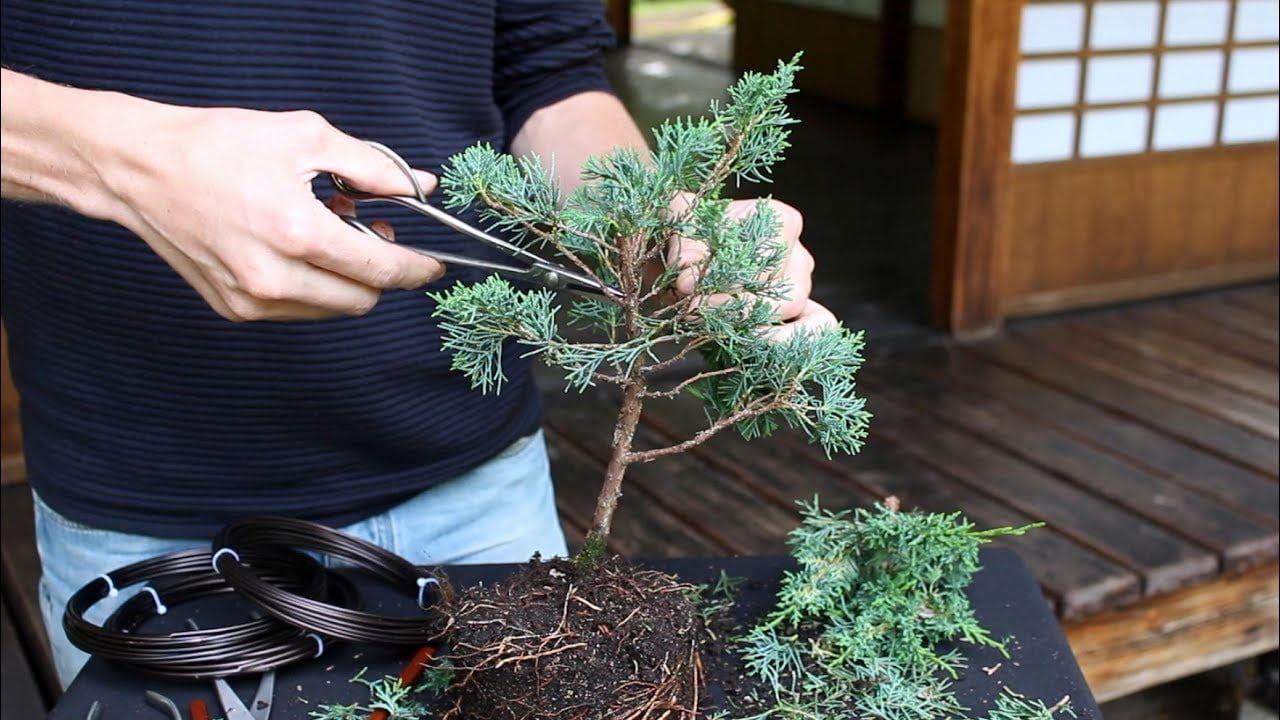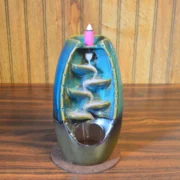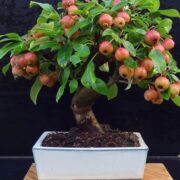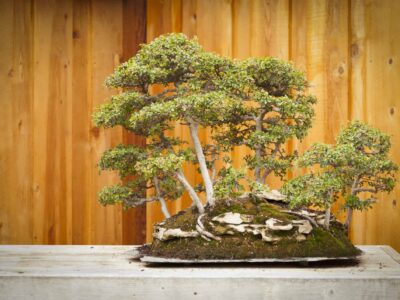Bonsai trees refer to the planting of a small tree in a container that can produce huge fruits like apples, mangoes, pomegranate, plums, guavas, etc. This is the oldest ancient horticultural practice that originated in China and is now seen widely around the globe.
All the Bonsai trees go through the steps of cutting, pruning, cultivating, wiring, etc. and stand at about 4 feet tall, they do not grow up to be 100 meters tall like a normal tree would, but their maximum height can reach up to 7 feet and still bear fruits and flowers.
Apple Bonsai trees are a great option to choose from since their growth is slow providing ample time for the new branches to come and develop themselves.
They produce beautiful flowers in spring and an appropriate size of fruit during its harvesting period. Let us see what all are required to make a Bonsai Apple tree.
Materials
The materials that you will be required for making an apple bonsai tree are a medium-sized container, your plant, a coarse substrate useful for drainage, pruners, soil, and lastly some wires and pliers for shaping the tree.
Soil
Soil is the key ingredient required in planting any type of plant or tree, it should be filled with nutrients, contain moisture, not too much because the roots will not stick in, but it should also not be dry as it will become difficult to plant.
For Bonsai trees, you can purchase a mix of Bonsai soil, or even make your own by mixing Akadema, Pumice, Lava Rock, and organic potting soil.
This soil is perfect for your tree as you want your roots to split up and side by side weaken the tree so that its length is shortened and stays at one point.
Seeds/Seedlings

You can start making your tree either through seed or seedling. It is always better to grow any plant from its earliest stages, with bonsai trees what is required the most is patience.
Once your small tree grows up to 5cm in height, you can shift it to a larger pot and begin its pruning and shaping. Just like the plant, the container’s size is also equally important.
Usually, the container should be of the same size as that of the plant, since its roots will wide open If you are going to buy an oval or rectangular pot, they should be ⅔ rd. of the tree’s height, and for round or square pots, they should only be ⅓ rd. of the tree’s height.
However, it is always recommended to go for bigger pots as you may not know how wide your tree will be.
Training
It is said to repot your bonsai trees every 2 to 5 years. For beginners, you should skip the process of cutting and shaping your tree, and watch it grow fully naturally. On your second bonsai tree, you can shape it the way you prefer.
What you want is to let your tree grow naturally and do the training and shaping beside it, you should never interfere in a tree’s growth, as they might not grow as naturally as possible.
It is advised to learn from the masters or watch videos of the correct method of training a bonsai tree before you start with yours, that way it will be helpful.
Pruning
You can use two types of trimming during your pruning stage – trimming or maintenance.
Trimming is basically where you are just trim down your tree, maintenance, however, requires properly maintaining your tree. During maintenance, you must both trim the roots for repotting, as well as for trim them to their desired shape and size.
While pruning your tree, you need to ensure that you do not cut all the way through, you need to have the growth buds active if you want to get fruit out of that tree. However, make sure to cut down any unwanted plants that might hamper the growth of your tree.
Longevity

If you are growing your bonsai tree from seeds, it can take up to 4-5 years for you to enter the pruning stage. Growing from seeds means you must have a lot of patience, the patience of 5 years before your tree starts to grow and you can modify it.
However, for those who cannot wait this long, they can buy pre-grown bonsai trees of 5-7 years and wait for the fruits to ripen. No matter whichever way you pick up a bonsai tree, it is going to last forever, for 10-20 years or maybe even more.
The oldest living Bonsai tree is about 1000 years old, and yours can be too if you take proper care of them every day.
Conclusion
Bonsai trees are shorter trees that can live up to 1000 years and bear fruits or flowers. It is not difficult to grow a bonsai tree, however, you must be extremely careful of all the conditions that might hamper its growth, because even if one condition is met, your bonsai tree can die in 2-3 months.
But it can also live up to 1000 years with careful watch every day. You can bear any fruit like apple, orange, pomegranate, etc., or just use the bonsai trees for flowers. You can also grow normal trees of 100m if you want, however, the bonsai trees seem to be a shorter and quickest way.
However, you do need a lot of patience and attention to your bonsai tree, one move, and your tree can be dead in a couple of months hence take help from professional arborists in Irvine for better results. You need to carefully monitor the weather conditions too, whether to keep your tree indoors or outdoors, depending upon the sunlight, cloudy weather, etc. And if keeping it inside, then how much light is required, and how much temperature.










Comments